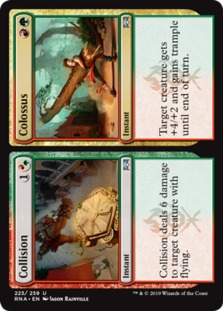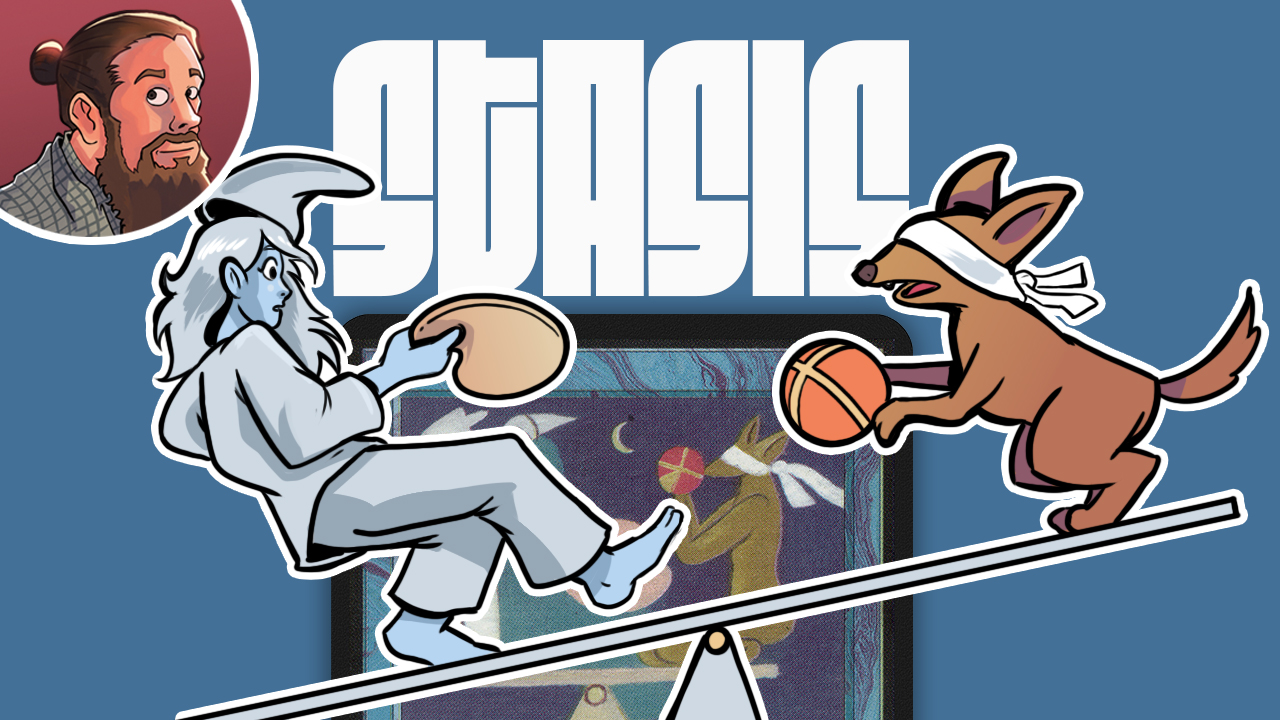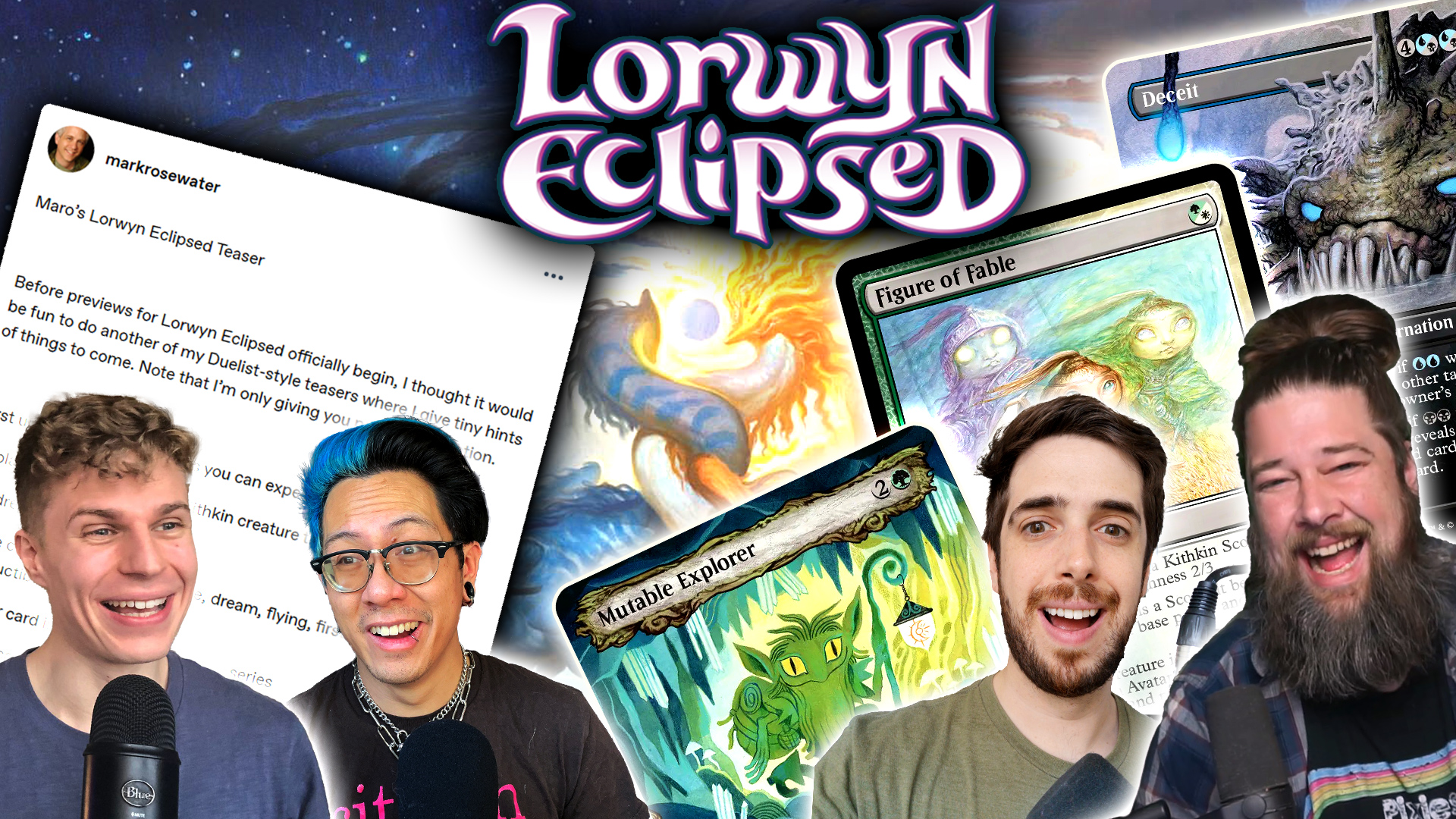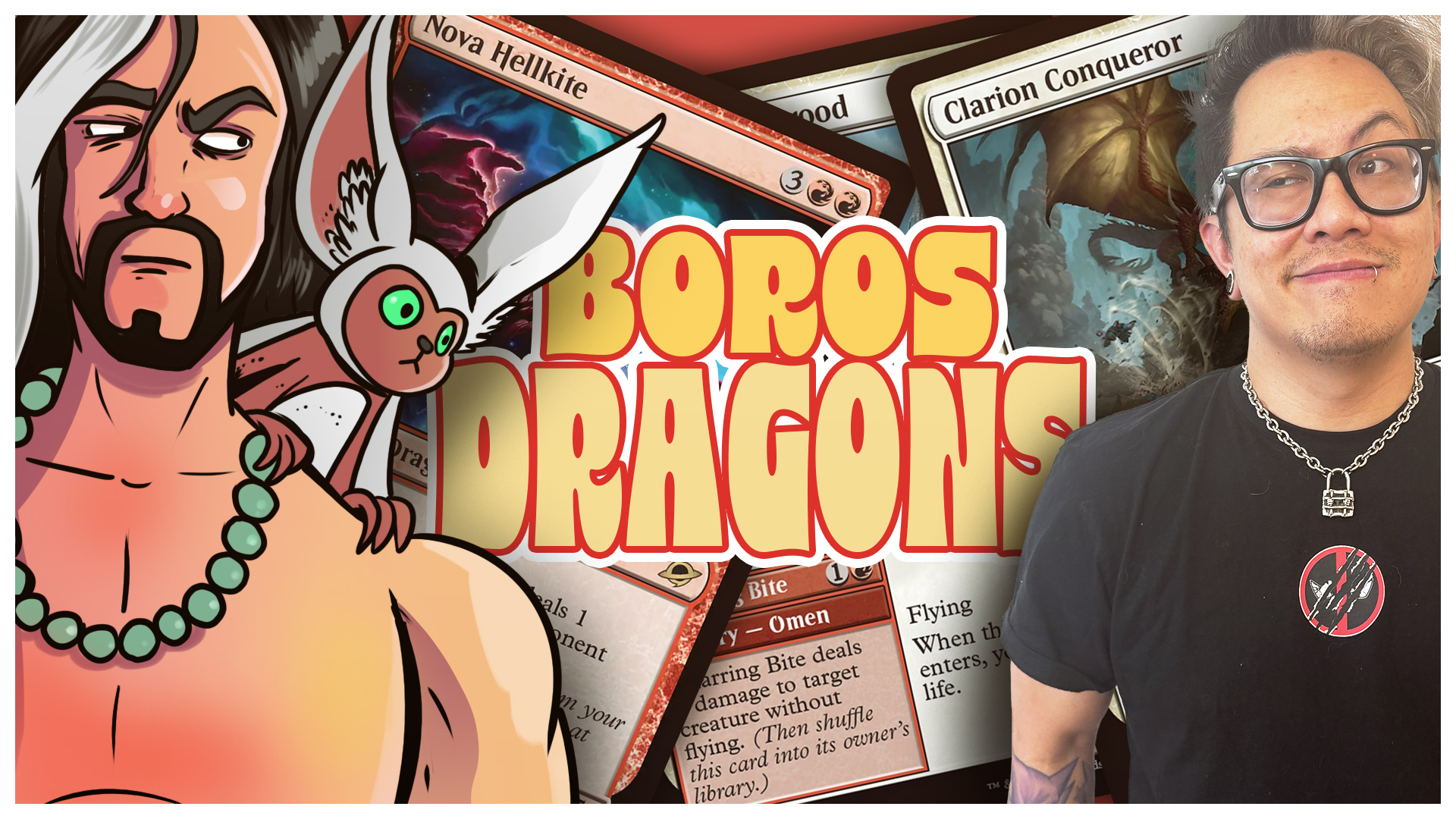Budget Magic: 4-Mythic / 10-Rare Pummeler (Historic)
Bonjorn, Budget Magic lovers, it's that time once again! This week, thanks to Kaladesh Remastered, we're getting a chance to revisit one of my favorite budget Standard decks from a few years ago, this time with a Historic twist: Pummeler! Perhaps the most exciting part of Kaladesh Remastered (outside of Panharmonicon, obviously) is the return of energy. Back when it was in Standard, there were two well-known energy decks: Temur Energy Midrange and Aetherworks Marvel Combo. But hiding just beneath the surface of the format was a third way to pay energy: Electrostatic Pummeler Combo! The idea of our deck today is pretty simple: we make some energy with various creatures and spells, play an Electrostatic Pummeler, and, with the help of some pump spells and Electrostatic Pummeler's self-pumping ability, kill our opponent with one massive Pummeler attack! How good is the deck in Historic? How big can we grow our Electrostatic Pummeler. Will four mythics and 10 rares be enough to make a competitive Historic deck? Let's get to the video and find out; then, we'll talk more about the deck!
Another quick reminder: if you enjoy Budget Magic and the other content on MTGGoldfish, make sure to subscribe to the MTGGoldfish YouTube channel to keep up on all the latest and greatest.
Budget Magic: Pummeler

The Deck
Pummeler is basically an aggro-combo deck. Perhaps the best comparison is a deck like Modern Infect, which uses pump spells to turn one creature into a lethal attacker early in the game. Pummeler is basically looking to do the same thing but in a less all-in manner. (While going off with Electrostatic Pummeler is the most spectacular thing our deck can do, we can also just play random creatures, some pump spells, and removal and win fairly.) To break down the deck, let's start with our energy creatures before moving on to the specifics of the Pummeler combo kill.

Electrostatic Pummeler might not look all that exciting. After all, it's just a three-mana 1/1. What makes Pummeler so scary is its ability to pay three energy to pump itself equal to its power. Thanks to a bunch of energy cards in our deck (and the fact that Electrostatic Pummeler itself makes three energy when it comes into play), it's pretty easy to get to the point where we can activate Electrostatic Pummeler to or three times in a single turn, which, combined with some other cards we'll talk about in a minute, can easily grow Pummeler into a 20-, 40-, or even 100+-power creature—more than enough to kill the opponent with just a single attack.

Bristling Hydra—the other rare in our main deck—is basically our backup Electrostatic Pummeler. While it gives up the one-shot-kill potential, it gains a lot of resiliency thanks to its ability to give itself hexproof (and a +1/+1 counter) for three energy. While Pummeler is really good at killing the opponent in one attack, it's also extremely fragile and easy to kill with removal, which can make it difficult (or at least risky) to try to pull off the Pummeler kill against removal-heavy control decks. On the other hand, Bristling Hydra is great against control, being extremely difficult to kill with targeted removal while also slowing growing into the biggest threat on the battlefield.



Rounding out our energy creature package is a trio of two-drops in Longtusk Cub, Servant of the Conduit, and Voltaic Brawler. On level one, each of these creatures makes energy that we can spend on Electrostatic Pummeler or Bristling Hydra. That said, each of our two-drops comes with a different upside, and all are fine cards on their own, even discounting our energy combo plan. Longtusk Cub can take over games by itself by generating energy when it deals damage and then growing itself with +1/+1 counters for two energy. Much like Robber of the Rich in Standard, it's much better on the play than on the draw since we're more likely to be able to get in an attack with Longtusk Cub and snowball the energy it makes into a massive threat. Servant of the Conduit gives us a mana dork that can ramp into Bristling Hydra or our other expensive spells or allow us to cast multiple pump / protection spells on the turn when we're ready to go for the Pummeler kill. Finally, Voltaic Brawler is just big. If we're willing to spend an energy, it's a 4/3 trampler for two mana, which is pretty above the curve.


Since we're talking energy production, we might as well quickly cover our last two energy cards: Harnessed Lightning and Attune with Aether. Harnessed Lightning is a really solid removal spell. By itself, it's basically a Lightning Strike that can only hit creatures, although if we're willing to spend the energy that we've saved up, it can turn into a mono-red Terminate, killing essentially anything. It's also worth mentioning that the way Harnessed Lightning is worded, it can be a weird energy ritual. We can target a creature (even one of our own creatures), choose not to spend any energy, deal zero damage, and end up with three extra energy (the exact amount it takes to pump Electrostatic Pummeler or Bristling Hydra) for our trouble. Meanwhile, Attune with Aether is essentially an Evolving Wilds that makes two energy. We count it as a land in our deck, which allows us to cut back to just 20 "real" lands.


Alright, now for the fun part: the Electrostatic Pummeler combo kill! The main idea is to get at least six (and preferably more—we can never really have too much) energy, use a pump spell or two to grow Electrostatic Pummeler's power, and then use Pummeler's activated ability to double its power enough times to make it lethal. Here's a really simple example to show just how easy it is to make Electrostatic Pummeler lethal. Let's say we have six energy (which isn't hard since Pummeler itself makes three). We can attack with Electrostatic Pummeler, use the Colossus half of Collision // Colossus to pump Pummeler into a 5/3 trampler, and spend three energy to double Electrostatic Pummeler's power to 10 and then three more to double it again to 20, which is often enough to win the game. Things get even crazier if we have more energy or additional pump spells. If we have nine energy rather than six, we can double Electrostatic Pummeler's power a third time, making it a 40/38 trampler, which should win through any number of blockers! Speaking of additional pump spells...



Rounding out our main deck are three other pump spells. Blossoming Defense is extremely important to our deck since it not only gives us another way to pump Electrostatic Pummeler but also gives hexproof. As we talked about a minute ago, the big drawback of Electrostatic Pummeler is that it's a small, fragile creature until we start pumping it. Blossoming Defense gives us a way to essentially counter a targeted removal spell and keep our Pummeler on the battlefield to win the game. Meanwhile, the four mythics in our deck are two copies of Garruk, Unleashed and two Embercleaves. Garruk is in our deck primarily for its +1, which offers a repeatable pump spell that also grants trample, although being able to make 3/3 Beasts is a nice bonus. Finally, Embercleave throws the Electrostatic Pummeler combo kill into overdrive by giving trample and double strike, and it's even scarier if we end up on our backup Bristling Hydra plan thanks to Bristling Hydra's ability to protect itself. While Embercleave and Bristling Hydra might not be the flashy one-shot kill of Electrostatic Pummeler, it is really difficult for most decks to interact with and still gets the job done in two or three attacks.
The Mana



The mana of Pummeler is extremely budget-friendly but actually pretty effective. Along with Attune with Aether (which we already discussed), we have basic lands, Rugged Highlands, and Aether Hub. While Rugged Highlands can be somewhat annoying because it comes into play tapped, it's the best option without spending a rare wildcard on something like Stomping Ground or a Cragcrown Pathway (although if you have either of these lands in your collection, you should run them over Rugged Highlands and / or basic lands). The big reason why Pummeler's mana is surprisingly good without any rare dual lands is Aether Hub, which gives us an untapped dual land at uncommon that also makes energy to help support our Electrostatic Pummelers and Bristling Hydras.
Playing the Deck
Even though the deck is named after Electrostatic Pummeler, the most important thing to realize about playing the deck is that we don't need Electrostatic Pummeler to win. The threat of getting one-shotted by Pummeler often forces opponents to play inefficiently, leaving up mana for removal and counters, which often allows us to win by beating down with Longtusk Cub, Voltaic Brawler, and our other random creatures.
There are two big challenges to playing the deck: managing energy and pump spells. While the answer mostly depends on the situation and matchup, it's important to decide fairly early in the game if we are planning on winning fairly (beating down with various creatures) or if we are focused mostly on the Electrostatic Pummeler combo kill. Here's a quick example: let's say we play Attune with Aether on Turn 1 into Longtusk Cub on Turn 2. If we're on the fair game plan, it will probably be best to pump Longtusk Cub on Turn 3. But if we're planning on setting up a Pummeler kill in a couple of turns, it's probably better to save our energy for Electrostatic Pummeler to make sure we don't end up just short of lethal. The same is true of pump spells. If we're trying to set up the combo kill, we often want to hold them until we're ready to win the game. But if we end up on the fair plan, we can use them earlier to force through damage or fizzle damage-based removal spells.
Don't forget the trick of using Harnessed Lightning as an energy ritual. It's a great way to sneak in one more Electrostatic Pummeler pump or to protect Bristling Hydra from one more removal spell, which can be the difference between winning and losing the game.
Wrap-Up
All in all, we finished 3-2 in our video matches with Pummeler, and overall, I played nine matches with the deck, going 5-4 (there were a lot of duplicates, including a massive string of control decks). The good news is that the deck is even more explosive now than it was back in Standard, thanks to cards like Embercleave and Garruk, Unleashed that didn't exist back in Kaladesh Standard. When things go well, it's surprisingly easy to kill with Electrostatic Pummeler as early as Turn 4. And thanks to Bristling Hydra, we have the ability to fight through control and play a longer game as well.
The bad news about Pummeler is that the deck can be inconsistent. Sometimes, our opponent kills our first couple of creatures, and we end up with a hand full of pump spells with nothing to target, while other times, we have a ton of energy and random dorks but can't find a pump spell to close out the game with Electrostatic Pummeler. Basically, while the deck has some spectacular games, it also has some really rough games.
As far as changes to make to the budget build of the deck, I'm not actually sure I'd change much of anything. While there are plenty of possible upgrades, they mostly involving adding more rares or mythics to the deck, making it less budget-friendly. That said, if you have rare dual lands like Stomping Ground or Cragcrown Pathway, you should definitely add them to the deck over Rugged Highlands and some basics.
So, should you play Pummeler in Historic? I think the answer is yes, if you're looking for a fun and competitive-ish budget option for the format. The deck is powerful and fun to play, and it's good enough to win a decent number of games and probably slowly rank up on Arena. Just practice a bunch! While Pummeler looks easy, there are a ton of small decisions (especially about when to spend energy) that often end up being the difference between winning or losing a game. The games where we just jank our opponent out with Electrostatic Pummeler on Turn 4 or 5 are easy, but when we don't get a free Pummeler wins, the deck can actually be pretty tricky to play well. If you're a fan of energy or decks like Modern Infect or just like the idea of aggro with a combo finish, give Pummeler a shot!

Is 14 total rares / mythics too much for your budget? Well, it is possible to get Pummeler a bit cheaper without losing too much power. Electrostatic Pummeler and Bristling Hydra are the two rares that are uncuttable, but we can drop Garruk, Unleashed and Embercleave for Invigorated Rampage. While Garruk, Unleashed and Embercleave are more powerful cards overall and help to support our backup non-Pummeler plan, Invigorated Rampage is even better when it comes to growing a massive Electrostatic Pummeler, giving us another trample-granting pump spell that offers +4 power, making it lethal with just six energy for two Pummeler pumps, just like Collision // Colossus. The other rare in the deck is two copies of Heroic Intervention. While I wouldn't recommend cutting Heroic Intervention unless it's absolutely necessary (it becomes much harder to beat cards like Wrath of God without it), mostly because there isn't a budget-friendly replacement for wrath protection in our colors, if you are running short on wildcards, then Ranger's Guile is a decent option for additional protection in the sideboard, even though it only works against targeted removal.

There are a few ways to upgrade Pummeler in non-budget form. If you want to stick to straight green-red, the easiest upgrade is just adding Stomping Ground and Cragcrown Pathway to the mana base and cards like Scavenging Ooze, Chandra, Torch of Defiance, and maybe Glorybringer to the sideboard. However, one of the upsides of playing Attune with Aether and Aether Hub is that it's really easy to splash into a third color. While black offers some potential mostly thanks to Glint-Sleeve Siphoner, blue might be the best splash color, offering Rogue Refiner and Whirler Virtuoso as additional powerful energy creatures (which are fine with Pummeler but especially helpful if we end up on our backup fair game plan since each offers two-for-one potential, Rogue Refiner with its card-draw enters-the-battlefield trigger and Whirler Virtuoso by making a bunch of Thopter tokens) as well as sideboard counterspells to protect Electrostatic Pummeler. Thankfully, since many of the energy cards we need in the deck are commons and uncommons, even when going into three colors, the deck still isn't that expensive, with just five mythics and 23 rares.
Conclusion
Anyway, that's all for today. As always, leave your thoughts, ideas, opinions, and suggestions in the comments, and you can reach me on Twitter @SaffronOlive or at SaffronOlive@MTGGoldfish.com.













